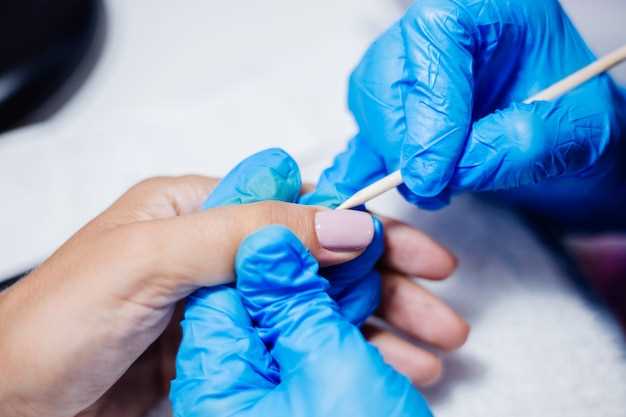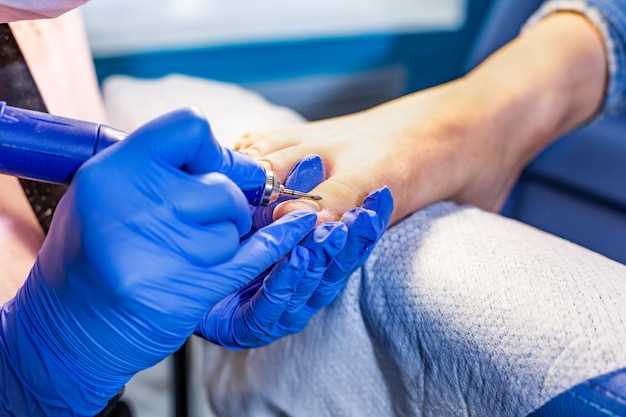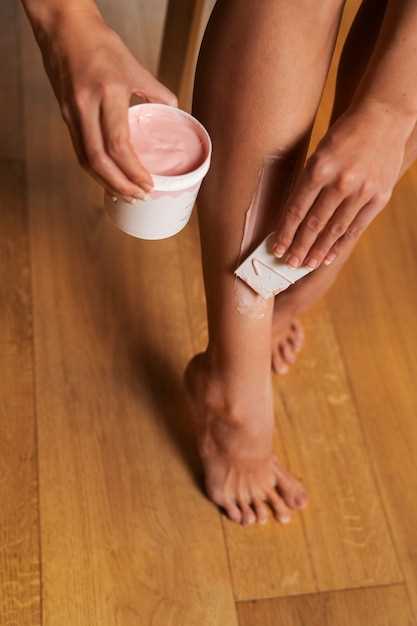
When it comes to foot health, one of the most common and bothersome conditions that individuals encounter is the occurrence of ingrown toenails. This ailment, characterized by the toenail growing into the surrounding skin, can cause significant discomfort and pain. Understanding the underlying causes of ingrown toenails is crucial in order to prevent their onset and implement effective treatment methods.
Several factors contribute to the development of ingrown toenails, ranging from improper nail trimming techniques to genetic predispositions. Inadequate nail cutting, such as rounding the corners or cutting them too short, can lead to the nail growing into the skin. Additionally, wearing tight-fitting shoes or engaging in activities that put excessive pressure on the toes can also increase the likelihood of ingrown toenails. Moreover, certain individuals may have inherited a curved or unusually shaped nail structure, making them more susceptible to this condition.
Prevention plays a key role in avoiding the discomfort and potential complications associated with ingrown toenails. Adopting proper nail care practices is paramount, including trimming the nails straight across and avoiding excessively short cuts. Wearing comfortable shoes that provide ample room for the toes to move freely can also help prevent the occurrence of ingrown toenails. Furthermore, maintaining good foot hygiene and regularly moisturizing the skin around the nails can contribute to overall nail health and reduce the risk of ingrown toenails.
Fortunately, there are various effective treatment methods available for individuals suffering from ingrown toenails. In less severe cases, soaking the affected foot in warm water and gently massaging the area can provide relief and encourage the nail to grow out naturally. However, for more persistent or painful ingrown toenails, seeking professional medical assistance is recommended. Podiatrists can offer specialized care, such as lifting the nail, removing the ingrown portion, or prescribing antibiotics if an infection is present. In severe cases, surgical intervention may be necessary to permanently resolve the issue.
Understanding Ingrown Toenails: Definition and Symptoms
When it comes to foot health, one common condition that many people experience is the discomfort of ingrown toenails. This condition occurs when the edge or corner of a toenail grows into the surrounding skin, causing pain, redness, and swelling. It is important to understand the definition and symptoms of ingrown toenails in order to effectively address and prevent this issue.
Ingrown toenails, also known as onychocryptosis, occur when the nail plate grows into the skin instead of over it. This can happen due to various factors, such as improper nail trimming, wearing tight shoes, or sustaining an injury to the toe. The condition primarily affects the big toe, but it can also occur in other toes.
The symptoms of ingrown toenails can vary from mild to severe. Initially, you may notice tenderness and redness around the affected area. As the condition progresses, the skin may become swollen and painful. In some cases, the ingrown toenail may cause an infection, leading to pus, drainage, and an unpleasant odor. If left untreated, ingrown toenails can cause significant discomfort and may even restrict your ability to walk or wear shoes comfortably.
| Common Symptoms of Ingrown Toenails |
|---|
| Tenderness and redness around the affected area |
| Swelling and pain in the toe |
| Infection, characterized by pus, drainage, and odor |
| Difficulty walking or wearing shoes |
If you are experiencing any of these symptoms, it is important to seek proper treatment to alleviate the discomfort and prevent further complications. Understanding the definition and symptoms of ingrown toenails is the first step towards effective management and prevention of this common foot condition.
Causes of Ingrown Toenails: Common Triggers and Risk Factors
Understanding the factors that contribute to the development of ingrown toenails is crucial in preventing and managing this painful condition. Several common triggers and risk factors can increase the likelihood of experiencing ingrown toenails.
| Triggers | Risk Factors |
|---|---|
| Improper nail trimming | Genetic predisposition |
| Trauma or injury to the toe | Foot deformities |
| Tight or ill-fitting shoes | Excessive sweating |
| Repetitive pressure on the toes | Diabetes |
| Fungal or bacterial infections | Obesity |
One of the primary triggers of ingrown toenails is improper nail trimming. Cutting the nails too short or rounding the edges can cause the nail to grow into the surrounding skin. Trauma or injury to the toe, such as stubbing or dropping something heavy on it, can also lead to the development of ingrown toenails.
Wearing tight or ill-fitting shoes that compress the toes can exert pressure on the nails, causing them to grow into the skin. Additionally, repetitive pressure on the toes, often seen in activities like running or dancing, can contribute to the formation of ingrown toenails.
Fungal or bacterial infections can weaken the nails and make them more susceptible to ingrowth. Individuals with genetic predispositions or foot deformities, such as bunions or hammertoes, are also at a higher risk of developing ingrown toenails.
Other risk factors include excessive sweating, which can soften the skin around the nails and make them more prone to ingrowth, as well as conditions like diabetes and obesity, which can affect blood circulation and increase the likelihood of developing ingrown toenails.
By understanding the common triggers and risk factors associated with ingrown toenails, individuals can take proactive measures to prevent their occurrence and seek appropriate treatment if needed.
Preventing Ingrown Toenails: Tips for Proper Foot Care
Ensuring the health and well-being of your feet is crucial in preventing the occurrence of ingrown toenails. By adopting proper foot care practices, you can significantly reduce the risk of developing this uncomfortable condition. Here are some essential tips to keep your feet in optimal condition and prevent ingrown toenails.
1. Trim Your Nails Carefully

When it comes to nail trimming, it is important to exercise caution and precision. Use a clean and sharp nail clipper to trim your nails straight across, avoiding rounded edges. This technique helps prevent the nails from growing into the surrounding skin, reducing the chances of ingrown toenails.
2. Wear Properly Fitting Shoes
Choosing the right footwear is crucial in maintaining healthy feet. Opt for shoes that provide ample space for your toes to move freely. Tight-fitting shoes can exert pressure on the nails, leading to ingrown toenails. Additionally, avoid wearing high heels for extended periods as they can cause your toes to be cramped and increase the risk of ingrown toenails.
3. Maintain Good Foot Hygiene
Regularly washing your feet with warm water and mild soap helps keep them clean and free from bacteria. After washing, ensure to thoroughly dry your feet, paying close attention to the areas between your toes. Moisture can create a favorable environment for fungal infections, which can contribute to the development of ingrown toenails.
4. Avoid Trauma to the Toenails
Avoiding trauma to your toenails is essential in preventing ingrown toenails. Be cautious when engaging in activities that may cause injury to your feet, such as kicking or stubbing your toes. Additionally, if you participate in sports or activities that involve repetitive pressure on the toes, consider using protective footwear or padding to minimize the risk of trauma.
5. Seek Professional Help
If you notice any signs of an ingrown toenail, such as pain, redness, or swelling, it is important to seek professional help. A podiatrist can provide appropriate treatment and guidance to prevent the condition from worsening. Early intervention is key in effectively managing ingrown toenails and preventing complications.
By following these tips for proper foot care, you can significantly reduce the likelihood of developing ingrown toenails. Prioritizing the health of your feet and adopting preventive measures will contribute to overall foot well-being and ensure a comfortable and pain-free experience.
Treating Ingrown Toenails at Home: Do’s and Don’ts
When it comes to dealing with ingrown toenails in the comfort of your own home, there are certain actions you should take and others you should avoid. By following these guidelines, you can effectively manage the discomfort and promote healing without the need for professional intervention.
Do:
- Soak your feet in warm water to help reduce swelling and soften the skin around the affected area.
- Gently lift the ingrown nail using a clean and sanitized tool, such as a cotton swab or dental floss, to create space and relieve pressure.
- Apply an over-the-counter antibiotic ointment to prevent infection and promote healing.
- Wear comfortable and properly fitting shoes that provide ample room for your toes to prevent further irritation.
- Maintain good foot hygiene by keeping your feet clean and dry, and regularly trimming your nails straight across.
Don’t:
- Attempt to cut or trim the ingrown nail yourself, as this can worsen the condition and lead to infection.
- Ignore signs of infection, such as increased pain, redness, swelling, or pus. Seek medical attention if these symptoms occur.
- Wear tight or narrow shoes that squeeze your toes, as this can exacerbate the ingrown toenail and cause further discomfort.
- Use sharp objects to dig into the skin or nail, as this can result in injury and increase the risk of infection.
- Delay seeking professional help if the ingrown toenail persists or worsens despite home remedies.
By following these do’s and don’ts, you can effectively manage and treat ingrown toenails at home. However, it’s important to remember that if the condition does not improve or becomes more severe, it is advisable to consult a healthcare professional for proper diagnosis and treatment.
Professional Treatment Options for Ingrown Toenails: When to Seek Help
When faced with the discomfort and pain caused by ingrown toenails, it is important to know when it is necessary to seek professional help. While there are various causes and prevention methods for this condition, sometimes self-care measures may not be enough to alleviate the symptoms. In such cases, professional treatment options can provide effective relief and prevent further complications.
Signs and Symptoms

Recognizing the signs and symptoms of an ingrown toenail is crucial in determining when professional treatment is required. Common indicators include redness, swelling, tenderness, and pain around the affected area. Additionally, if there is pus or drainage present, it may indicate an infection, which necessitates immediate medical attention.
Professional Treatment Options
When self-care measures fail to provide relief or if the ingrown toenail becomes severe, seeking professional treatment is recommended. Podiatrists, specialized foot doctors, are trained to diagnose and treat ingrown toenails. They may employ various methods depending on the severity of the condition.
| Treatment Method | Description |
|---|---|
| Partial Nail Avulsion | This procedure involves removing a portion of the ingrown toenail and the underlying nail bed. It is typically performed under local anesthesia and is effective in preventing future ingrown toenails. |
| Complete Nail Avulsion | In severe cases, where the ingrown toenail keeps recurring or is accompanied by chronic infections, complete nail avulsion may be recommended. This procedure involves the removal of the entire toenail, allowing for the affected area to heal properly. |
| Antibiotics | If an infection is present, the podiatrist may prescribe antibiotics to eliminate the bacteria and prevent further complications. It is important to complete the full course of antibiotics as prescribed. |
| Wound Care | After any surgical procedure or treatment, proper wound care is essential for optimal healing. The podiatrist will provide instructions on how to clean and dress the wound to minimize the risk of infection. |
It is important to remember that professional treatment options should be sought when self-care measures are ineffective or when the ingrown toenail becomes severe. Prompt intervention can help alleviate pain, prevent complications, and ensure proper healing.
Effective Treatment Methods for Ingrown Toenails: Surgical and Non-surgical Approaches
Addressing the discomfort and pain caused by ingrown toenails requires effective treatment methods that can alleviate symptoms and promote healing. This section explores various approaches, both surgical and non-surgical, that can be employed to provide relief and resolve the issue.
Surgical Interventions:
When conservative treatments fail to provide adequate relief, surgical interventions may be necessary to address ingrown toenails. One commonly used surgical approach is a partial nail avulsion, where a portion of the affected nail is removed to alleviate pressure and allow for proper growth. This procedure is typically performed under local anesthesia and has a high success rate in resolving ingrown toenails.
Another surgical option is a total nail avulsion, which involves the complete removal of the affected nail. This approach is usually reserved for severe cases or when the ingrown toenail keeps recurring despite other treatments. While this procedure may require a longer recovery period, it can effectively eliminate the problem and prevent future occurrences.
Non-surgical Treatments:
Non-surgical approaches are often the first line of treatment for ingrown toenails and can be effective in mild to moderate cases. One such method is soaking the affected foot in warm water with Epsom salt, which helps reduce inflammation and pain. Additionally, gently lifting the ingrown edge of the nail with a sterile instrument and placing a small piece of cotton or dental floss underneath can encourage proper nail growth and alleviate discomfort.
Applying antibiotic ointment and covering the affected area with a sterile bandage can help prevent infection and promote healing. Wearing open-toed or wider shoes can also relieve pressure on the toes and allow for better airflow, aiding in the healing process.
It is important to note that these treatment methods should be discussed with a healthcare professional, as they can provide personalized recommendations based on the severity of the ingrown toenail and individual circumstances.